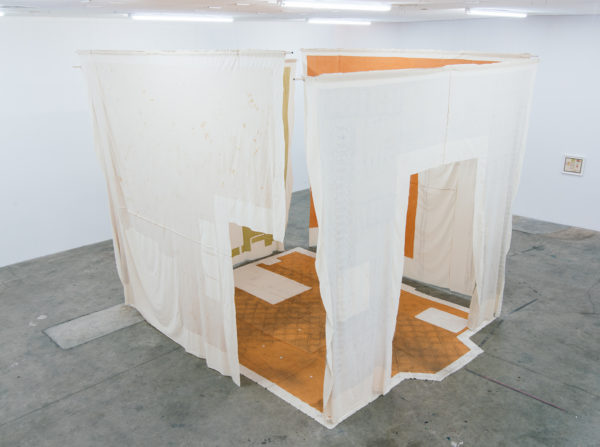
Expo Chicago 2018
The work of Marlon de Azambuja aims to generate strategies that amplify the perceptions and relations that the spectator establishes with the city, architecture and the art world in general. Herencia, exhibited in this occasion, is a living sculpture that questions in some ways the basis of art itself. A painted plant acquires the qualities of an art object, of a sculpture; however with the passing of time it strips itself of its artistic value to return to its essence. This almost performative act, capable of displacing the artistic quality from the plant, generates a vital question: where does art remain? In the painted leaves gathered and kept in a urn next to the plant o in the artistic value contained in the act of returning to one’s own nature?
For Nicolás Consuegra, the presence of some owls in Still Life, symbol used previously as part of the image of Colcultura – entity that disappeared to give way to the current Ministry of Culture- and designed at that time by Marta Granados and Carlos Duque, emphasizes the interest of certain institutions to employ a bird as symbol for a cultural agency. This owl-or moreover, these owls- marked an era of the culture in Colombia; they were a kind of vigilant and enigmatic figures that linger in cultural productions and continue to circulate in our memory, long after Colcultura ceased to exist. In Free Plant, Nicolás recalls the architectural paradigm of the same name; the model and the hand that models it are inter twined, reversing each other’s symbolic dimension. Fingers as piles suggest the planes’ stability, however, it is the latter that restrict their organic movement.
Interacting with architecture to reflect on personal histories and her own immigrant experience, Carmen Argote’s work explores notions of home and place. Employing the act of inhabitation as a starting point, Argote often works with her family, describing the immigrant experience as a layered, multigenerational, transnational experience that is echoed though shared memories, traumas, and aspirations. For Argote, architecture exists beyond the physical structure; in familial myth, in class structures, in shapes, and as an imprint acting upon the body. Her interest in the shape of spaces and in layout as visual language for expression developed in her childhood from looking at her father’s architectural drawings of houses he wanted to build.
Navy pier, 600 E Grand Ave, Chicago, IL 60611




